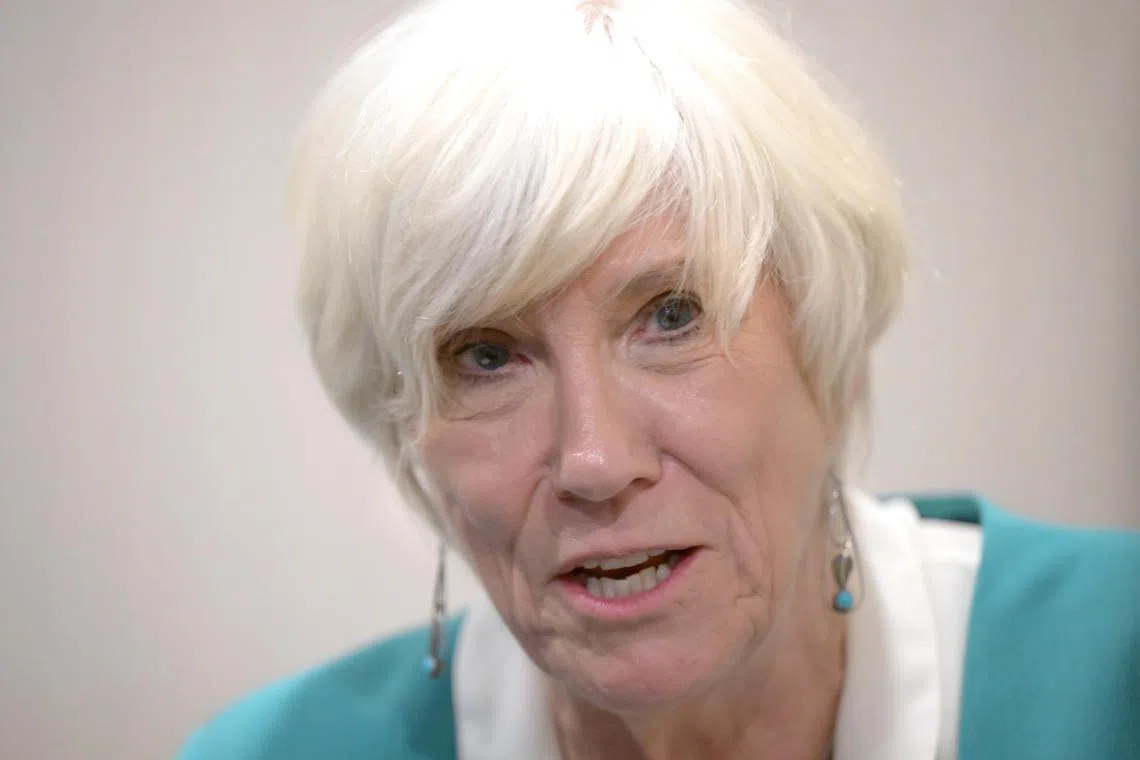Global Young Scientists Summit
How one expert is helping preserve the great H2O molecule for the blue planet
Some of the world’s brightest minds came together in Singapore from Jan 6 to 10 to mingle with and inspire over 340 young researchers at the annual Global Young Scientists Summit. The Straits Times spoke to these prominent scientists about their work and what drives them.
Sign up now: Get ST's newsletters delivered to your inbox

Professor Joan B. Rose holds the Homer Nowlin chair in water research at Michigan State University, where she has worked for the last 22 years.
ST PHOTO: NG SOR LUAN
Follow topic:
SINGAPORE – Being on the losing team turned out to be a blessing in disguise for Professor Joan B. Rose.
Hers was the team that lost when two groups vied for the Newater project in 1998.
Prof Rose had signed an exclusive contract to join a consulting engineering group bidding on a wastewater reclamation project in Singapore.
Although this team lost the bid, she had made her mark. Her name was put forward to be on the independent advisory panel, overseeing the science, research and engineering of the project.
And so began a 25-year relationship between Prof Rose and Singapore to come up with better ways of developing clean, safe water.
Prof Rose, 70, an American, holds the Homer Nowlin chair in water research at Michigan State University, where she has worked for the last 22 years. She is the director of the university’s Water Alliance, leading interdisciplinary efforts to solve the significant water problems.
An international expert in water microbiology, she is a member of the US National Academy of Engineering, the Royal Institution of Singapore and the EU Academy of Sciences, as well as a corresponding member of the Royal Academy of Sciences and Arts of Barcelona, Spain.
She was awarded the 2016 Stockholm Water Prize Laureate for her tireless contributions to global public health, assessing risks to human health in water, and creating guidelines for communities to improve global health.
Currently, she is a water quality adviser to PUB, the national water agency.
She sat as a member of the Singapore committee from 1998 to 2000, travelling frequently to the Republic to help drive the development of the wastewater reclamation facility known as Newater today.
“I worked for five years on the independent advisory panel, and then they asked me to stay on after the research was done, and since then I’d been coming to Singapore twice a year, to look at the research and data, and then they decided to build the full-scale facility,” Prof Rose said, adding that Singapore had become somewhat of a second home to her.
Named an honorary citizen of Singapore in 2015 for her significant contributions in creating a safe and sustainable water system in Singapore, Prof Rose became actively involved in various Singapore events including the Global Young Scientists Summit and Singapore International Water Week, helping to bring global attention to Singapore’s water management strategy.
Back in the country for the 13th edition of the summit, she was among 18 experts, including 11 Nobel laureates, who mingled with their younger peers over five days.
Over the years, Singapore’s growing infrastructure to treat wastewater and reuse that very resource has allowed it to implement the One Water Concept, a framework that sees water as a circular resource, and one that many countries strive to emulate.
“The No. 1 product for the circular economy that is developed right now for wastewater, is water. Second is nutrients, and third is energy,” Prof Rose said, emphasising the importance of such a system as water pollution from industrial and agricultural sources continues to increase drastically, and unpredictable climate change weather events hang in the air.
In Singapore, the Tuas Nexus aims to address these issues. The world’s first integrated waste and water treatment facility will be energy self-sufficient when it is fully completed in 2028, helping the Republic reduce its carbon emissions, with carbon savings of more than 200,000 tonnes of CO2 annually, according to the National Environment Agency.
Incorporating a waste-to-energy facility, the Tuas Nexus will harness the synergies of the water-energy-waste nexus from used water and solid waste, making the by-product of one facility the resource for another.
“I’m very impressed with this resource-recovery approach and with that facility. It’s very cool,” Prof Rose said.
To engage more of the public in water conservation and treatment initiatives, she said there is a need to “reconnect people back to the waters”, help them understand their water systems and watersheds, and where their water comes from and goes to.
“People, knowing that, can take a more civic role in decision-making, such as voting on the financing of different water projects, or setting up their own septic tanks.”
Water is “the great H2O molecule for the blue planet”, and to ensure water security and sanitation for the future, she emphasised the importance of ministries working together to make overseeing water issues a less fragmented process.
“In the US, we have quite a fragmentation because of our separate laws governing safe drinking water and wastewater regulation,” she said. “And there has been a long discussion of how do we, at the state level, implement a One Water Concept, which has been done in Singapore.”

